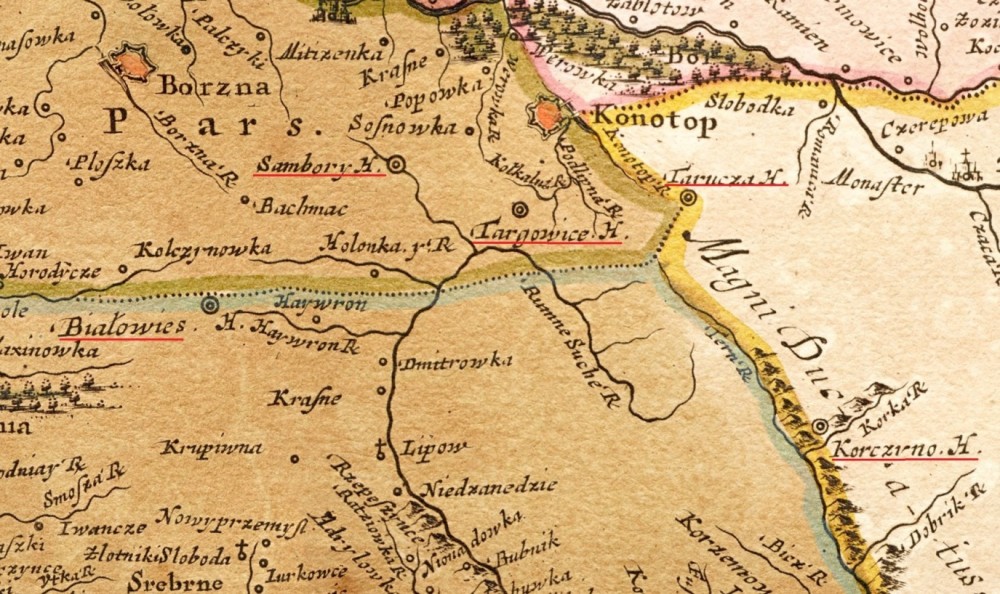
The article deals with issues related to the work of the interstate commission to determine the borders between the Polish-Lithuanian Commonwealth and the Moscow kingdom in the first half of the 17th century. Based on the analysis of written and visual sources, the authors identified the problems that arose during the work of this commission. They are connected, first of all, with the identification of toponyms mentioned in the texts, and specific geographical and archaeological sites. The basis for the work was a map compiled by Guillaume Levasseur de Beauplan during the work of the commission. Particular attention of the cartographer was riveted to the eastern borders of the Polish-Lithuanian Commonwealth. Not only cities and villages were marked there, but also separate settlements. Their names repeat toponyms in the central part of the Commonwealth. These names are also mentioned in act documents of the XV-XVII centuries. They became weighty arguments in border disputes, and as a result, these territories were recognized as the possession of the Polish Crown. Upon careful study of the texts of letters that are available today, such conclusions are not so unambiguous. Names were put on the map that, with rare exceptions, had not been mentioned before. In addition, similar names are often found on the territory of the Ukrainian and Polish lands of the Commonwealth. Without accurate maps, it was almost impossible to prove the fact that this particular place or region was mentioned in a border dispute. It was the coincidence of most of the names of border toponyms in uninhabited territories that allowed the Polish side to prevail in polemics with Moscow boundary judges and defend their right to disputed lands.
Source: Sergey I. Degtyarev, Evgenij M. Osadchij (2022). Delimitation of the Border between the Polish-Lithuanian Commonwealth and the Muscovyin the Interfluve of the Sula and the Sejm in the first half of the 17th century. Bylye Gody. 17(4): 1513-1522
Source web-site: https://https://bg.cherkasgu.press/journals_n/1669897757.pdf
Number of views: 1695